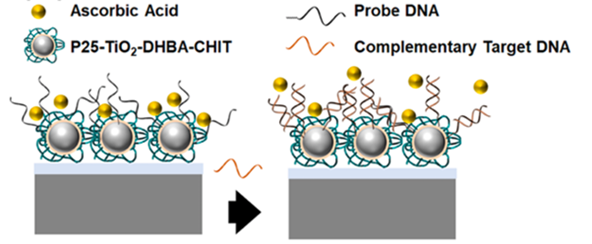Enhancing the Photoelectrochemical Response of Photoelectrodes

Tech ID
20-007
Inventors
L. Soleymani
I. Zhitomirsky
A. Victorious
A. Clifford
Patent Status
US patent granted; CA application filed
Stage of Research
Proof of principle data available;
J. Phys. Chem. C, 2019
Contact
Amy Hector
Business Development Manager
Abstract
TiO2 nanoparticles are widely used as the photoactive building blocks of electrodes for applications in photoelectrochemistry (PEC). To improve the electrochemical reaction rate and resultant photoelectrochemical current, the TiO2 nanoparticles need to achieve a high incident photon-to-electron conversion efficiency (IPCE).
A team of researchers from McMaster has linked TiO2 nanoparticles with a catecholic polymer to develop a hybrid organic/inorganic coating for enhancing IPCE, especially in the visible range, uniformity, and wet-state adhesion of photoelectrodes. This unique PEC platform allows for facile fabrication of photoactive products for a number of PEC technologies. Optimized IPCE and PEC performance was demonstrated in UV and visible ranges using DNA functionalized photoelectrodes for biosensing applications.
Applications
- Enhanced performance of TiO2-based PEC technologies, in fields such as
- Biosensing and diagnostics
- Energy conversion
- Environmental cleaning
Advantages
- One-pot fabrication of stable photoactive electrodes using a fully solution-based process
- Higher light absorption in the visible optical spectrum
- Higher IPCE due to modified electronic and optical properties of photoelectrodes
- Improved film-forming properties of hybrid organic/inorganic electrode coating
- Enhanced signal-to-background ratio of photoelectrode-based biosensors

